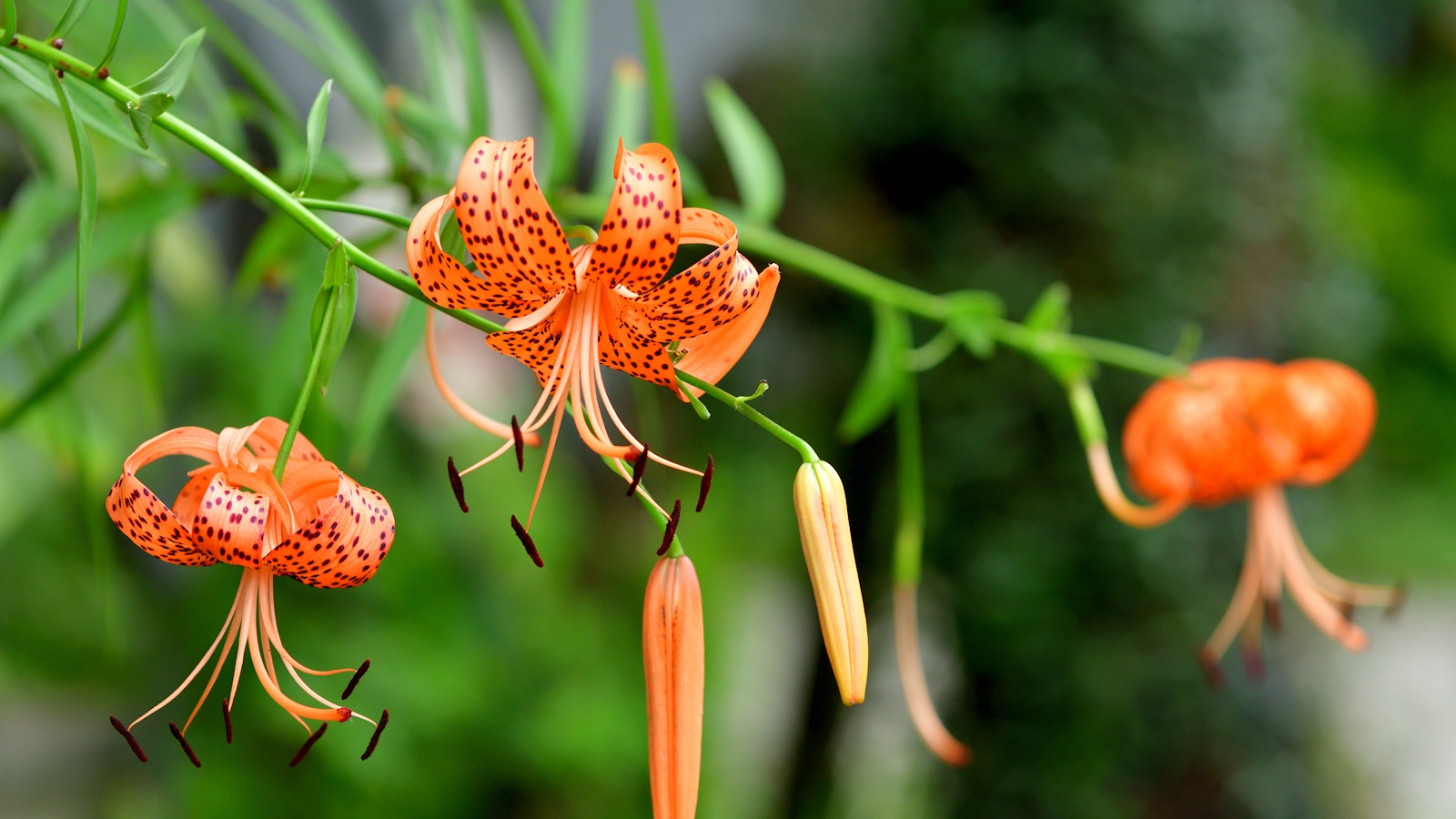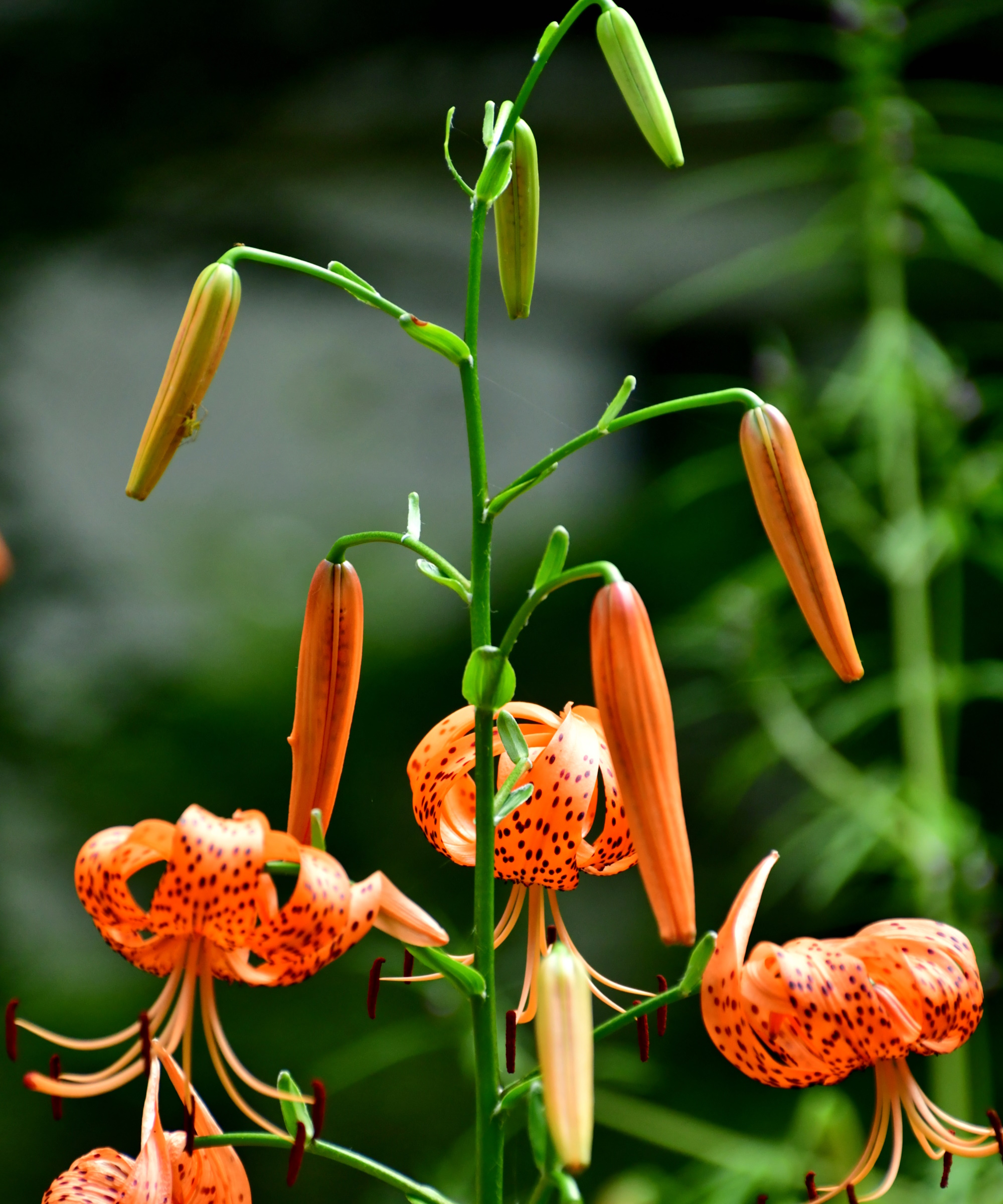How to grow tiger lily – you won't believe how easy it is to add an exotic, expensive look to your garden with these hardy perennials
Tiger lilies are a must for vibrant, elevated blooms in summertime


Tiger lilies, or lilum lancifolium, are a vibrant perennial flower, destined to inject color into any area of your yard. Their petals are speckled with dark flecks and since the orange variety is most common, the tiger-like comparison perfectly suits.
Whether you're in the midst of planning your flower bed ideas for spring or wish to brighten up your home's windowsill come summer with exotic-looking cut blooms, these flowers are low maintenance but big on visual impact.
With the help of plant experts, we introduce you to the world of tiger lilies. From a step by step planting and growing guide to their exact care needs, this is everything you need to know.
How to grow tiger lily
Tiger lilies don't just come in a classic orange hue, but also red, yellow, pink and white. Whichever variety you're wishing to grow to add an extra element of design to your garden color schemes, this guide will help you get there.
Growing habits of tiger lily

Originating in Asia and being known to symbolize wealth, prosperity and good fortune, tiger lilies have a rich history. For a long time the species was known as lilium tigrinum, directly translating to 'lily tiger', but many years later the name was changed to what it is today (lilum lancifolium) after botanists studying the plant found a Swedish publication dating back to 1794 referring to tiger lilies with this name.
Best planted in USDA plant hardiness zones 3-9 during spring or fall, tiger lilies are praised for their adaptability and hardiness, sprouting across a large portion of different states. They tend to prefer living in full sun to produce the best possible droplet blooms, truly thriving in the warm summer months, and while they're enjoying blooming season they serve as an amazing food source for pollinating insects.
Tabar Gifford, partnership cultivator and master gardener at American Meadows, says, 'Tiger lilies have tall, sturdy stems that support clusters of downward-facing blooms. Being a deer-resistant summer bulb adaptable to various soil conditions, this species is a magnet for pollinators like butterflies, while its elegant blooms and rich cultural history make it a favorite in both wildflower front yards and cultivated borders. Whether planted in a sunny bed or tucked among shrubs, tiger lily are a timeless addition that delivers lasting beauty with minimal effort.'
Design expertise in your inbox – from inspiring decorating ideas and beautiful celebrity homes to practical gardening advice and shopping round-ups.
Tiger lily plants produce bulbils (miniature bulbs) which naturally drop during late summer to fall when prime blooming season is off-peak, making the species self-populating. Though you can collect these bulbils and re-plant them yourself.
Jenny Rose Carey, a professional horticulturist, author and gardener, says, 'Once tiger lilies are established in a garden they can spread prolifically. There are tiny little bulbils produced in the leaf axil (where the stem and leaf meet). They are black and form while the plant is growing in the summer.
During the summer these little black and shiny bulbils mature and drop off the plant onto the soil. You can pick them off the plant at the end of the summer and plant them in a different part of the garden or in a pot if you wish, but they are a great "pass-along" plant. I got my first tiger lilies from a lovely gardening neighbor.'

As the Partnership Cultivator at American Meadows and High Country Gardens, Tabar Gifford, a Master Gardener, and dedicated “plant geek,” passionately fosters connections. With a lifelong love for gardening and nature, and a background in environmental studies and sustainable community development, she combines horticultural expertise with a commitment to education. Striving to empower individuals in achieving their gardening aspirations, Tabar embodies a genuine passion for sharing her knowledge. She gardens in zone 4 in Vermont.
Care guide for tiger lilies

Soil: Tiger lilies can grow in a range of soil pH's, from acidic to alkaline, but their favorite is well-draining soil that contains lots of organic matter such as dying leaves or compost.
Jenny says, 'Soil that is loose and contains plenty of leaf mold is great for tiger lilies as the soil will be open and airy, ideal for draining water.'
To improve your garden soil if the soil in your yard contains dense components like clay, add in sand or compost to loosen it up.
If you don't have leaves laying around in your yard or other organic matter to toss into your tiger lily soil, there are options available for purchase like the Miracle-Gro performance organics all purpose mix from Amazon. This soil mix contains a blend of peat moss, compost and other beneficial ingredients.
You can also purchase bags of sand such as the Coarse Silica Sand 2.7lb or Mosser Lee ML1113 Desert Sand 7lb on Amazon.
Light: As a sun-loving perennial, tiger lilies require lots of sunlight and to be positioned in full sun where possible.
'Lilies thrive in full sun to partial shade, with 6-8 hours of sunlight per day being ideal,' says Tabar.
You can monitor the amount of light your tiger lilies are receiving using a digital meter like the 4-in-1 soil moisture meter from Amazon, using its sunlight intensity setting.
Watering: Tiger lilies need watering around once a week, or when the soil feels dry to the touch. If your area is going through a particularly sunny spell, make sure to check in on your lilies regularly to ensure they're receiving enough water.
It's best to water tiger lilies as close to their base as possible, avoiding splashing water on their leaves.
'Splashing water on the leaves of your tiger lilies when watering plants can lead to diseases as well as scorching when those leaves are exposed to the sun,' says Tabar.
Fertilizing: You don't need to fertilize lilies of this variety, though it can be beneficial to add a light amount during spring when the plants are preparing to bloom.
'You can add fertilizer if you have very poor soil or in spring to help your lilies to bloom beautifully,' says Jenny. 'Choose a fertilizer that is used to boost blooms and is low in nitrogen, otherwise you will get leaves more than flowers, which is a definite fertilizing mistake.' The grow more urea-free Hawaiian bud and bloom fertilizer from Amazon should do the trick.
Pruning: It's important to deadhead your tiger lilies using a pair of pruning scissors like the Fiskars 2" plant snips from Target once blooming season is over to encourage better future growth. Leaving dead flowers and stems on your plants can cause harmful pathogens to spread to the rest of your plant.
Toxicity: 'Tiger lilies can be toxic to cats and dogs if eaten in large amounts,' says Tabar. And not only the flowers: every part of a tiger lily is extremely toxic. It's best not to have tiger lilies indoors if you have either of these pets, and if any of a lily becomes ingested pets should be taken to see a vet immediately.

Jenny Rose Carey is an avid hands-on gardener, professional horticulturist, and author. Jenny moved with her American husband to the Philadelphia, Pennsylvania and has gardened there, at her private 4.5 acre garden called Northview, ever since. Jenny has authored two books, Glorious Shade and The Ultimate Flower Gardener's Guide. Jenny's third book, concentrating on bulbs, is due to be released in the fall of 2025.
How to plant tiger lilies: step by step
Growing tiger lily bulbs is relatively simple, and best begun in either the spring or fall. Tabar breaks down the following step by step process to plant lily bulbs:
- Choose the perfect location: An area in full sun to partial shade, ideally where natural well-draining soil can be found.
- Prep your soil: Dig down at least 10 inches to loosen the soil and remove rocks or debris to create a nice soft bed for the bulbs to be planted in. Mix in organic matter such as compost to create a nutrient-rich, slightly acidic environment (pH 6.0-6.5).
- Plant your bulbs: Plant bulbs about 4 inches deep, with the pointed end facing up, and space them 12-15 inches apart to allow for growth and air circulation.
- Water and mulch: After planting, water the area thoroughly to settle the soil. You can add a 2-3 inch layer of mulch if desired to retain moisture, regulate soil temperature, and suppress weeds. If using mulch, choose an organic matter like wood or bark chips.
- Provide a support (if needed): Tall tiger lilies may need staking, especially in windy areas. Place stakes carefully to avoid damaging bulbs, and tie stems loosely with garden ties (this pack of 17 inch plant support stakes from Amazon is a popular choice, and these stakes are a great shape for holding flower heads in place).
If you're looking for more bulbs to plant alongside your tiger lilies, there are plenty of impressive specimens to plant in spring for showstopping flowers this summer. Here are 8 of the best high-impact bulbs to consider. These will have produced earlier blooms if they were planted in fall, but it's better late than never.

Ciéra is a writer and regional laureate with particular passions for art, design, philosophy and poetry. As well as contributing to Homes & Gardens, she's an Editorial Assistant for Design Anthology UK and a contributing writer for magazines including Livingetc, Apartment Therapy, House Beautiful and Ideal Home. Previous commendations of hers include being Highly Commended by The Royal Society of Literature and receiving a prestigious MA Magazine Journalism scholarship to City, University of London.